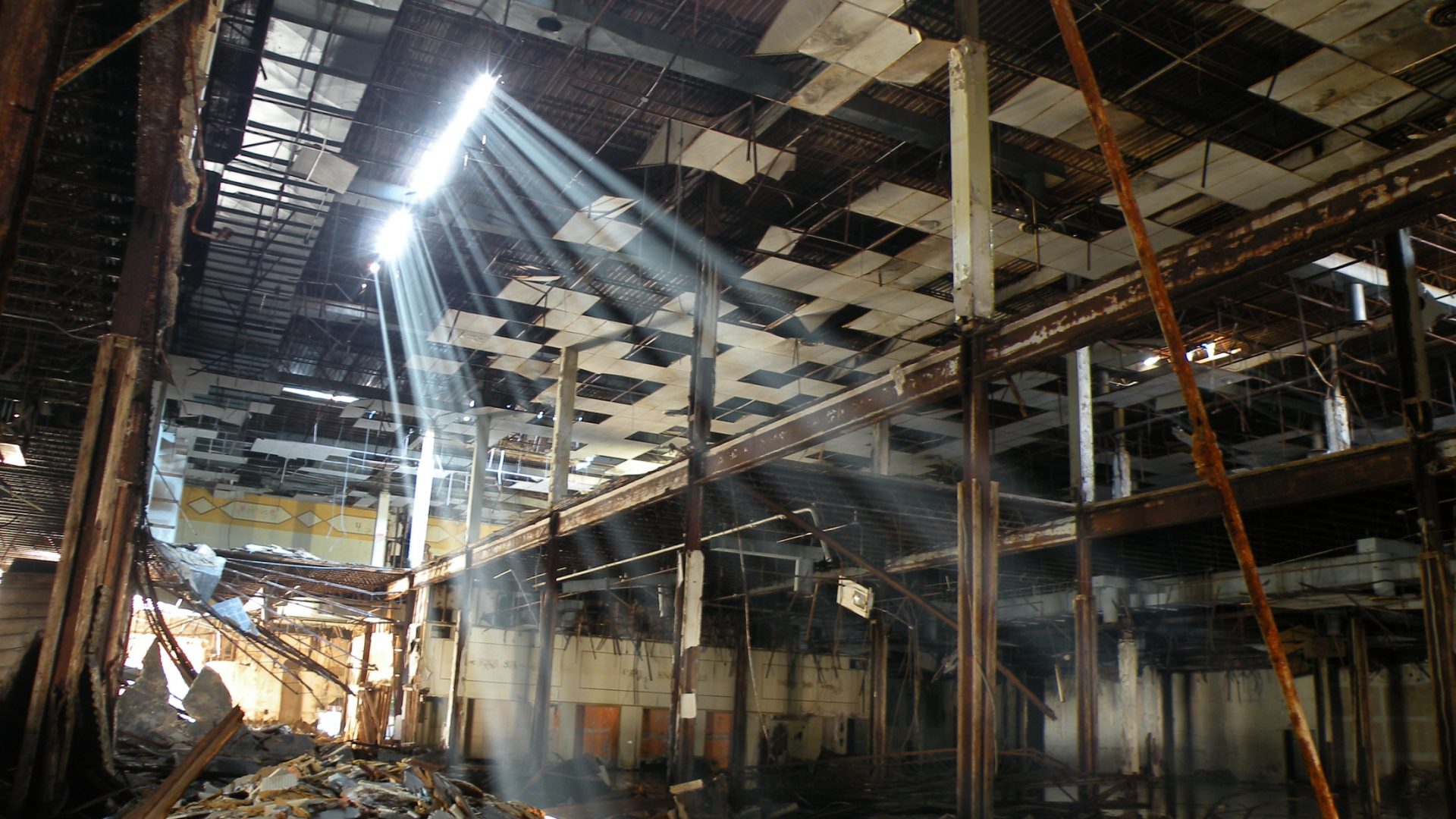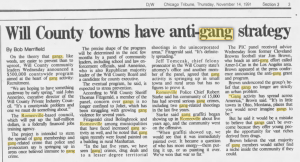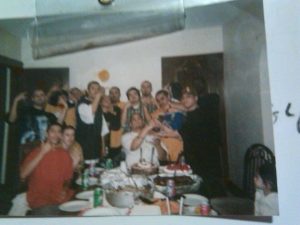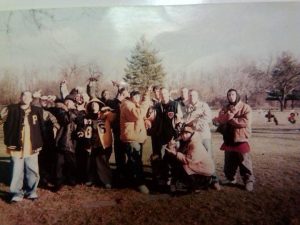| Nicknames | Hooterville, Romeotucky | |
|---|---|---|
| Settled by | John Blackstone; | |
| Year infiltrated | 1987 | |
| Crime impact | Non-factor | |
| Worst areas | Provide info | |
| Suburban projects | None |
I debated hard about doing a page for Romeoville because first of all, it is not a high crime community, it is a rather safe community and is not economically depressed and never has been. Second, Romeoville does not have severe gang problems and the gang activity they did have did not go on in the 1960s, 1970s or earlier 1980s making Romeoville pretty much fall out of the criteria I usually choose to write about. One thing I could not ignore was the wave of gang issues in the distant past that was actually quite crazy to the point where the village turned into little Cicero for a short time, of course with the exception of the murders that Cicero has had over the years.
Romeoville has undergone major changes, what once was a working class village with a population around 14,000 in the 1990 census, exploded to nearly 40,000 residents by the year 2010 thanks to heavy duty buildup of retail businesses and commercial development, and the development of several new subdivisions. Romeoville has also experienced a large influx of Latino migration which also added to the increased population size. Before the big boom beginning in the early 1990s there was an issue with gangs and crime the village needed to face that was enough of an issue for me to write about.
The first settlement of this land by the white man occurred in the year 1833 when a small log cabin was built by John Blackstone near the site of where present day New Avenue and 135th Street meet right next to the present site of the Illinois Central Railroad tracks. The cabin that housed the lonely settler was converted into a post office on October 29, 1833 that served the entire area for any scattered settlers in the present day northern Will county area, John Blackstone served as the post master for the area until February 27, 1834 when the post office was moved to present day Joliet because there were bigger plans to develop that area and construction already began.
In the year 1835, pending construction for the Illinois Michigan Canal brought the need to develop the area since work on the canal was going to cut directly through this area. On September 14, 1835 the platting of “Romeo” was made official as this was to be the name of this planned city that was going to be built up and to be the twin city of “Juliet.” Land in the new Romeo was cheap at $1.25 an acre; however, there was not a massive rush to purchase land in Romeo as only same scattered farmers purchased land in the subdivisions.
In the year 1836 canal commissioners lost interest in developing Romeo into the twin city to Juliet, instead focus shifted to developing Runyonstown into the city of Lockport that began in 1837, making Lockport the official twin city to Juliet which later was renamed Joliet in 1845. Settlement in Romeo was still very scattered and extremely minimal.
The population grew a little by 1837 once ground broke for canal construction as mostly Irish immigrant workers arrived in the area and built log cabins near the canal; however, the workers did not plan on living in the area long, only until construction finished; therefore, they had no interest in developing the community and were only there to eat, sleep, work and drink whiskey. The workers were stacked on top of each other in these log cabins and conditions were harsh especially in the winter, causing many workers to die from the elements. Workers had to be tough to endure the brutal manual labor and brutal schedules as a big portion of their pay was whiskey even though they wanted wages more than anything, this led to a violent revolt against the Canal Commission on July 4, 1838 as a big brawl between workers and Canal Commissioners broke out that resulted in murder as workers were not only killing and beating their bosses but also other canal workers, the rioting did not stop until the Will County Militia arrived on horseback from Joliet to put down the rebellion.
During canal construction, the area still remained barren farmland with the exception of the workers, but one notable resident and canal worker Thomas J Sprague found a decent fortune settling in Romeo a distance away from the canal in 1838 at the present day intersection of Normantown Road and Route 53 where he built his large house and developed a farming industry in his own backyard making him the wealthiest resident of Romeo for many years, his house was known as “House number 1” because he was the first permanent settler in the village and his house survived the longest among all 19th century homes that were ever built in the village.
When canal construction was complete in the year 1848, the vast majority of the Irish canal worker left their log cabins behind and moved to bigger cities to find work and only a few scattered farmers remained like the Sprague family. Some canal workers found the place ideal and built houses in the area but the population remained extremely low. The first business in Romeoville was a small grain company along the canal but that was it as far as industry other than private farms.
The next few decades saw no further development in Romeo until in 1884 when the Santa Fe Railroad created a stop for travelers on the train which brought about the opening of a general store near the tracks which became Romeo’s second business. In 1886 the first of three limestone quarries opened in the village which provided employment opportunities, in the year 1890 two more quarries would open for business.
In the year 1892, construction began on the Illinois Sanitary and Ship Canal which would become Romeo’s second canal. Construction of this canal once again attracted many Irish workers that were again paid heavily in cheap whiskey. The construction of the canal caused a boom in population in the 1890s and the building of three saloons near the canal because workers loved to drink their problems with back breaking labor away, this brought about many brawls in the taverns. The canal construction also brought about other small businesses to develop like restaurants and bakeries.
The population was soon approaching 100 residents and there was a need for law enforcement, especially to deal with rowdy canal workers, in 1894 a jailhouse and a ship canal police officer were brought to the community. In the year 1895, Romeo was officially incorporated and the small village hall was built near the canals.
In the year 1898, more employment became available when construction began on the Illinois Michigan Canal Bridge that would become a toll bridge for those passing through the area, this caused more of a population boom and now transportation to and from Romeo was easier making the village much more attractive.
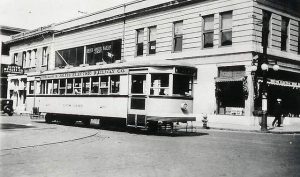
In the year 1900, both the canal and the bridge were complete, and as usual some canal workers left town in seek of employment elsewhere while other stayed and built permanent homes and worked at the various quarries. That same year of 1900 brought easy travel to Romeo from Joliet with an electric street car line that zipped from Lemont to Joliet that was located at the present day site of New Avenue, one year later in 1901 the street car line (pictured) was now extended from Joliet to Chicago which brought many visitors to Romeo. At that point Romeo changed its name to Romeoville and became known right away for the village’s abundance of hunting and fishing opportunities near and on the Isle A La Cache which was literally an island that sat near the I&M Canal that Romeo Road ran through. The tourism on the island brought an immediate need for hotels to be built including a hotel built right on the Island and others near the street car line. Some Chicagoans fell so in love with the island that they moved from the city to Romeoville and built their own homes on the island and converted part of their homes into hotels in the 1900s decade.
In the year 1910, a large tavern/hotel was built right next to the I&M canal which served tourists and had a marvelous and large screened in porch, the upstairs was where the hotel rooms where. This was Romeoville’s fourth tavern and offered endless entertainment into the wee hours of the night as it had a more favorable location near the island that was full of the tourists.
In the year 1915 Romeoville spun into a panic when the demand for limestone suddenly ceased in favor of concrete. Two of the three quarries completely closed down while the third operated at a smaller staff, which brought many layoffs to the village, causing the population of the community to shrink down to only 74 residents by the 1920 census.
The Bruce family that owned two of the quarries converted one of them into a natural swimming pool, while they converted the larger quarry into a manmade beach. In 1916, the Bruce family opened the doors to the Romeo Beach which offered a concession stand and water slides. The Bruce family charged admission and was open Memorial Day weekend until Labor Day weekend annually. People flocked from all over the Chicago metro area and even from all over the country to enjoy this man made beach that over the years served many celebrities including many Chicago White Sox players because the Bruce’s were big fans of the Sox. Over the decades the parking lot would become so packed that parking became scarce near the beach. Village revenue rolled in with the opening of the beach as many new restaurants and bakeries opened up near the beach and the island. Hunting and fishing clubs materialized near the island and Romeoville’s fifth saloon/restaurant opened directly on the island in 1922 by future village Mayor Neil Murphy. The restaurant was so renowned that travelers came from far and wide to enjoy the raved about food then have drinks.
As prohibition swept the country in 1920, Romeoville did not take kindly to this new law because the village’s mayor was a saloon owner and future Mayors after him were saloon owners too, plus the community thrived off of tourism and the five various taverns, and giving into prohibition would drive away tourists and hurt the small village’s economy; therefore, the drinks kept flowing in the community and Chicagoans and Joliet residents flocked to the small village to enjoy drinks without worrying about harassment from law enforcement, Will County Sheriffs were the only ones that could break up the taverns but the village kept them away, not only that Romeoville did not have its own police force yet, so the drinks flowed freely thanks to the supply of Al Capone. Legend has it that Al Capone supplied all the liquor to this tourist town. Rumors flew around that Al Capone used to dump dead bodies in the I&M Canal, and there were many sources that said it really happened but there is no proof, nevertheless, there was a lot of Chicago gangster activity during the prohibition years in Romeoville.
After prohibition, Romeoville suffered during the depression years like most other communities nationwide, tourism dropped, the street car line was dismantled in 1933, and the last quarry closed down.
When World War II ended Romeoville’s tourism increased once again and the local businesses that thrived off it blossomed as well. New Avenue was paved in 1944 that helped bring more visitors from Lemont, Lockport and Joliet. The development of U.S. Route 66 that ran through the village brought more tourism especially since the automobile was more standard by the 1940s. More taverns, restaurants and gas stations where built along Route 66 that brought more tourism to the village. The local oil refinery was not only a major employer to the village, it also provided the petroleum to the gas stations in town, including a gas station owned by the Spague family on Route 66 and a gas station right next to the beach owned by the Startz family.
In the early 1950s, the population would experience a slight increase as Rairdon’s subdivision opened back up for business after it went mostly defunct in the 19th century, a few new homes were now built up in the old subdivision but a bigger project was in the cards.
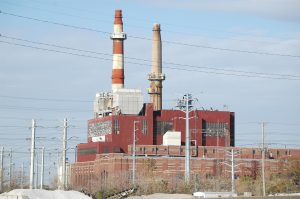
In 1955, Will County Electric Generating Station (pictured) that was a division of Commonwealth Edison built a large electric plant right next to the beach that brought more employment to the village and brought a demand for more housing.
In the year 1957, plans were rolled out to build the Hampton Park subdivision by the Alexander Construction Company. Hampton Park construction went on all throughout the late 1950s and into the early 1970s as a new police station was built and finally the village had a fire department in 1960. The old village hall was left vacant in favor of a brand new one in 1960 and the town’s population boomed as Romeoville turned into a fully functioning village with now two strip malls and multiple schools. Romeoville had turned into a happy working class community as the population boomed to nearly 13,000 residents by 1970. Romeoville residents especially enjoyed the recreation the village offered as far as hunting and fishing were concerned on the island and the Romeo Beach that was still flooded with tourism.
Romeoville would begin to change starting in the year 1973 after the Bruce family sold Romeo Beach to Commonwealth Edison as the company closed the beach to tourism and converted it into a cooling pond. After the conversion, tourism almost disappeared and the village grew completely quite after the hunting and fishing tourism had to cease shortly after because the new Comed acquisition took away the fishing and hunting abilities of the area. Restaurants and other businesses began to close down near the canal because without tourism the area was only an industrial park, this also depleted the need for hotels in this area of Romeoville. In 1978 and 1979 construction on new subdivisions came to a grinding halt due to due to the collapse of the local economies in nearby Joliet, causing Honey Tree subdivision and Popular Estates to remain unfinished.
The village did not further develop or change in the 1980s decade and began to lose money in large volumes sinking $9 million dollars into debt. Former Mayors in the Village were unable to figure out how to help Romeoville and proved not to be as effective of Mayors as long time Mayor Neil Murphy that retired in 1969 or his predecessor Mayor O’Hara that left office in 1973.

Romeoville did not plummet into an impoverished neighborhood; it simply became highly uninteresting and had no solid revenue generation. Plans for building a bridge over interstate 55 went into effect in 1987 that would drive in outside traffic to the community to the villages’ barren Weber Road that was not well paved and only had scattered farms, but the village plans were to develop shopping, commercial development and other businesses when the bridge was complete; however, the project would take years to complete. A massive explosion at the oil refinery in 1984 severely crippled the village as it damaged houses and businesses near the canal, all but a few of those homes were repaired and still lived in, and most were torn down.
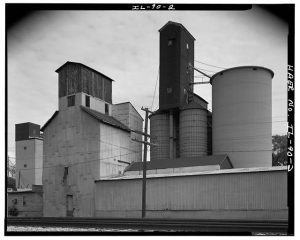
In 1982, the houses on the island were closed down and torn down to make way for Isle A La Cache museum that consisted of the old Murphy’s restaurant, after the explosion all of old Romeoville was gone accept a few houses under the 135th Street bridge, Chick’s Romeo Tavern and the old grain elevator (pictured).
In the year 1979, a 23rd and Sawyer Latin King named “King Kurly” moved into town and became the first Chicago based gang member to settle in the village. In 1980, King Kurly began recruiting some youths in the village that lived in Poplar Ridge which was the area bounded by: Murphy Drive on the north, Oakton Avenue on the south, Gavin Avenue on the east and Ashton Avenue on the west. until their numbers were about 12, this made Romeoville one of the first Latin King sections in the suburbs. King Kurly wanted to keep a low profile and keep activities on the down low, this is why Romeoville police and many people in the village didn’t identify this section in the early 80s, all that was known was there was a group of a dozen kids that hung out and sometimes fought with jocks and burnouts from Romeoville High School. The Kings often had fights at Crazy Rock Gentlemen’s Club (Back then it was Crazy Rock nightclub) on Route 53 and at the USA Skate Center also off Route 53. These Latin Kings would often get drugs from the city and sell it in the village but this was all a discreet operation.
In 1982, “King Stretch” and “King Dead Eye,” two Maywood Latin Kings moved into town and now joined King Kurly. King Stretch and King Dead Eye were brothers and King Stretch was an original member of the Maywood Latin Kings that was currently on trial for a murder charge in Melrose Park. King Stretch was only 17 at the time so her was still in high school and attended Romeoville High School briefly introducing many students to the Latin King nation. Just as King Stretch was beginning to get Romeoville acquainted with the Latin Kings he was sent to do time in prison in 1983 and would not return until the end of 1986. At the same time King Kurly got in trouble with the law too and accepted an option to serve in the military to avoid jail time, that was when the Romeoville Latin Kings shrunk down to force of just four members.
In the year 1987, King Stretch returned and began recruiting Romeoville youths into the Latin Kings, thus, creating the Romeoville Latin Kings permanent chapter and the gang soon became very popular with Romeoville youths. King Stretch was choosy on who he took into the Latin Kings, however, he found a good number of recruits. Another reason for the creation of the Romeoville Latin Kings was many of the early Mexican residents in town were being treated as second class citizens and the Latin Kings aimed to put an end to that. The village soon became familiar with Latin Kings after gang graffiti began appearing in town and now the police already identified the Latin Kings. Often times there was rumor flying around that the Romeoville Latin King branch was not legit, nothing can be further from the truth as this chapter was directly certified by Maywood original members and the Maywood chapter also sponsored the majority of the southern Chicago land suburbs before and after Romeoville but Romeoville had fully direct sponsorship by Maywood and King Stretch making Romeoville Latin Kings an important chapter at least before the year 2001, I can’t speak for after 2001.
Gang graffiti started popping up in the village in 1987 and this was the year that gang activity first started in Romeoville according to Will County Sheriff Thomas Fitzgerald in a 1991 interview with the Chicago Tribune, who also claimed the gang activity was not real severe.
Latin Kings clashed with locally created gangs like the “Rude Boys” also know as “Rude Boy Killers,” but there were no other Chicago based gangs in the village until 1989.
In the year 1988, a member of the Black Gangster Disciples nicknamed “Moonrock” moved into the village and soon befriended local youths. Moonrock was from the North Center neighborhood in Chicago from the Lathrop public Housing projects. By 1989, Moonrock began recruiting local youths becoming the first Folk alliance gang in the community and now there was a Chicago based alternative to becoming a Latin King. That did not last long before a member of the Latin Counts moved into the village and began recruiting mainly near the Poplar Ridge subdivision and they soon opened their section near Irene King Elementary School and they hung out behind R.C. Hill Elementary while the Black Gangster Disciples had two sections; one in the Honeytree subdivision and one in Poplar Ridge area. The Latin Kings mainly had the area near St. Andrews Church especially on Glen Street. The formation of their territory coincidentally formed a five point crown symbol which was quite ironic and iconic.
The Latin Kings’ main turf was in an area bounded by: Arlington Drive on the north, Montrose Drive on the south, Fenton Avenue extending to Route 53 south of Belmont Drive on the east and Montrose Drive again on the west. The Latin Kings were also present in an area bounded by: 135th Street on the north, Murphy Drive on the south, Route 53 on the east and Eaton Avenue on the west. Over here they fought viciously with Two Six and Latin Counts in later years.
The Black Gangster Disciples (Later known as Gangster Disciples) were in these two areas: Honeytree: Six Pines Drive on the north, Abbeywood Drive on the south, Enterprise Drive on the east and Dalhart Avenue on the west. Poplar: Murphy Drive on the north, Oakton Avenue on the south, Gavin Avenue on the east and Ashton Avenue on the west. For some time, in the early years Gangster Disciples also had the area by O’Hare Woods bounded by: O’Hare Woods on the north, 135th Street on the south, Belmont Drive on the east and Yates/Arsenal Road on the west.
The Latin Counts main territory was: Murphy Drive on the north, Hamrick Avenue on the south, Route 53 on the east, Belmont Drive on the west all by Irene King. The Counts also had a section bounded by: Arlington Drive on the north, Belmont Drive on the south, Route 53 on the east and Fenton Avenue on the west.
The area of Belmont Drive on the north, 135th and the south, Arnold Avenue on the east and Belmont Drive again the west was a neutral area that housed members of various gangs including Latin Kings, Two Six, Gangster Disciples, Conservative Vice Lords and Maniac Gangster Disciples, making these streets the scene of much violence and graffiti in the early years.
Latin Kings and Latin Counts held meetings together at times alongside any other various small People alliance gang members in the village and the two gangs tagged together. In the beginning Kings and Counts were great allies. The Two Sixs and Gangster Disciples were also very close allies in the beginning.
As far as shootings were concerned Romeoville was not big on shootings in the late 1980s as gang members engaged in graffiti and fist fights, usually in brawls that would involve several members of each gang fighting one another in the streets and in the schools.
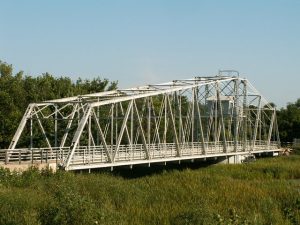
The early 1990s were the worst years Romeoville faced. The village was in heavy debt and highly disorganized, and traffic into the community was once again inhibited when the legendary Illinois and Michigan Canal Bridge (pictured) was removed and there was no plan to build a new one, cutting off one of entry ways into the village. The removal of the bridge ended up costing the village more money than it could handle. Not only was the community in debt but crime was on the rise and gang activity was really strong. The Latin Kings were stronger than ever and heavily active in the village; the Latin Counts were also large in number and were the most violent gang in the community. Besides the main four street gangs of Romeoville other street gangs attempted to take territory in the village that became unsuccessful such as: Spanish Cobras, Four Corner Hustlers Imperial Gangsters, Satan Disciples and Conservative Vice Lords (only recruited about 5 or 6 members).
In 1991 and 1992 “John John,” a Joliet Two Six gang member moved into the village and began recruiting Romeoville youths, soon they had an established section although not nearby the size of the Gangster Disciples or rival People alliance gangs but it was an alternative to joining the Gangster Disciples while still being with a Folk alliance gang. The Two Sixs mainly frequented the area bounded by 135th Street on the north, Murphy Drive on the south, Eaton Avenue on the east and Hemlock/Homer Ave on the west. About the same time in 1992, the Maniac Gangster Disciples landed in Romeoville and recruited the same size amount of gang members as Two Six. The Maniac Gangster Disciples territory was mainly from Naperville Drive on the north, Normantown Road on the south, Dalhart Avenue on the east and Hudson Avenue to Rodgers Road on the west. The amount of Two Six, Gangster Disciples and Maniac Gangster Disciples did not equal to the strength in numbers to combined forces of the Latin Kings and Latin Counts that numbered in possibly a few hundred in combined forces. The Gangster Disciples were the biggest competition with several gang members.
In the year 1992, the Insane Deuces colonized Romeoville by an Aurora Insane Deuce named “Rio” that originally came from the Lathrop Projects in the city. Rio was a serious gangster and was just like King Stretch and Moon Rock. The Deuces recruited close to 10 members in the village and soon made a lot of noise in the town going against Latin Kings and Latin Counts. The Deuces also assisted the Two Sixs and Gangster Disciples against the People alliance gangs.
Another area that saw much violence and graffiti was the area bounded by: 135th Street on the north, Murphy Drive on the south, Macon Avenue on the east and Belmont Drive on the west. In this area it was mainly all Gangster Disciples and Two Six gang members living here with some some Latin Kings in here. Latin Counts and Latin Kings from nearby would invade this area sparking many incidences of violence.
Romeoville became an ideal suburb for gang activity because the struggling village was too preoccupied with bickering and issues with law enforcement. The village police were also in denial about gang activity in the early 1990s and would not face the issue head on. The village was covered in gang graffiti, in public parks, public schools, fences, etched into sidewalks, school text books and desks, on the sides of stores and payphones. Everywhere there was gang graffiti, mostly done by Latin Counts, Latin Kings and Gangster Disciples. Gangs hung out near public schools and engaged in gang activity. The Popular Estates’ older section was filled with Gangster Disciples, while the newer section of that subdivision that began development in 1992 was mostly gang free. The Latin Kings were dominant in the entire central area of town and by Westview Junior High School (renamed A Vito Martinez in 1993) and were also scattered throughout the village. Two Six gang members could be found just west of Irene King elementary in a small area consisting of a few blocks. Romeoville not only began experiencing several drive by shootings almost daily, the graffiti was also out of control and made the village look like a very hard and scary neighborhood, house number 1 was even full of graffiti and became a gang hideout.
Ever since the 1980s the gangs became active in O’Hara Woods which is located near a pond that was used for fishing. O’Hara Woods was supposed to be a place of recreation for Romeoville residents to walk through and enjoy nature and sometimes teenagers would go into the woods to smoke dope and have fun, but once gangs arrived in Romeoville in the late 1980s the woods became heavily patrolled by gang members day and night to the point where residents did not feel safe in those woods. The picnic benches were filled with several gang symbols etched into them and a large wooden balcony for sightseeing was covered in gang tags. The ruins in the woods where old U.S. Army structures once stood were covered in gang tags, and there was even gang symbols spray painted onto various trees throughout the woods warning rival gang members to stay away. Several gang fights and other activities happened in these woods day and night which also brought gang activity and fights to the nearby streets near the woods.
Romeoville High School was full of gang conflicts because Bolingbrook youths were attending Romeoville High School which brought Bolingbrook Latin Kings, Two Six, Gangster Disciples, Four Corner Hustlers, Black P Stones and Two Two Boys into the high school that conflicted with Romeoville gangs causing brutal gang fights in the hallways that would sometimes become bloody. Romeoville High School like the village, was not equipped to deal with gangs and crime in the school so gangs were almost free to do as they pleased, even lockers and classrooms were full of gang graffiti, and many text books had gang symbols on about half the pages. After school gang fights happened in the parking lot of the school or in the fields near the school and many times the fights would happen in the nearby streets especially by Troxel Avenue and Hamrick Avenue which became one of the rowdiest corners in Romeoville because the Latin Counts dominated that street corner and tagged several gang symbols on a fence there that lasted for years even after they became inactive, they fiercely defended that corner from Latin Kings and Folk Nation gangs and any Bolingbrook invaders, this resulted in several shootings on Hamrick Ave and on Tallman Avenue.
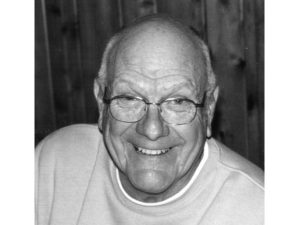
It was said that 1992 was the worst year for gang activity and gang violence in Romeoville, it was also the peak of power for the gangs and this led to action in 1993 to deal with the issues in Romeoville head on. Sandy Gulden took over as Mayor of the village in 1993 and began to repair what Mayor John Strobbe (pictured) could not fix. On a positive side new Romeoville commercial development was underway and the Popular Ridge Estates subdivision had resumed construction in 1992 after a 14 year stand stall. A new subdivision had begun on Normantown Road called Lakewood Estates but the promised Weber Road corridor had not begun construction yet and the 135th Street Bridge was still out. Gulden had a full plate in dealing with village layoffs, $9 million in debt, crime and gang issues and incomplete projects, but Gulden soon prevailed by helping clean up graffiti, beginning development on Weber Road that started with the Lakewood Falls subdivision in 1993, and also getting tough on gangs.
There is a rumor that Sandy Gulden paid King Stretch thousands of dollars to help prevent graffiti from appearing in the village as her only option to truly stop the onslaught of graffiti. Rumor has it that Stretch then divided a small portion of that money to work with other gangs to stop their graffiti as well while putting the rest into his own Latin King chapters. I do not know if this is accurate or not but it is a rumor.
On the subject of Lakewood Estates, soon after construction in 1993, Romeoville gangs began to fight for control of this new territory as Latin Kings and Gangster Disciples attempted to spread their influence on these streets, however, no gang ever grabbed a foothold on this area due it being heavier patrolled and having higher income residents.
1994 was still a rough year for the village and gang activity was still very high and shootings were still quite common in the village. The Latin Kings and Gangster Disciples were the largest gangs in the village and battling for power while Latin Counts were giving both gangs a lot of grief. Romeoville police began cracking down on known gang leaders. At the time the Latin Kings were basically being led by 21 year old Freddie Barron that was a Latin King member from the 31st and Drake (Drake side) chapter of Latin Kings in the Little Village neighborhood in Chicago. Barron is often mistaken as the Romeoville Latin King founder but he is not, that is credited to King Stretch that moved out of the area long ago. On the night of August 31, 1994 Barron got into a gang fight on Haller Street, he then pulled out a sawn off shotgun and began firing at the house which was just down the block from where he lived, he was arrested and charged with several felonies which is just an example of one Romeoville gang leader that was taken down that year (Chicago Tribune August 31, 1994). Barron lived in the zone that was shared by Two Six and Gangster Disciples, this may have been the reason the violence happened due to Freddy, being a Latin King, living in Folk territory.
By 1995, as the village continued to develop with new middle class subdivisions on Weber Road and new businesses, the police crack downs on the streets and in Romeoville High School continued. Romeoville police began conducting drug sniffing dog raids on a weekly basis at the high school, while on the streets many raids and drug busts took place; many of them targeted gang members. Romeoville became much quieter in 1995 after the many arrests. Many high ranking or older members of the Latin Kings were arrested and given prison terms while about half of the Latin Counts were taken down in drug busts and other crack downs. Most of the Two Six gang joined up with the Gangster Disciples causing the Two Sixs to become much smaller in size, but many higher up Gangster Disciples were also taken down. 1995 was also a year most Romeoville original gang members started to retire that joined in the late 1980s, many had started families or were too busy working full time jobs to gang bang, leaving most of the gang activity to the younger and newer members that were not quite as ruthless as the older members that joined in the late 1980s. Also, many of the older members didn’t necessarily retire but learned how to engage in low key activities as they became more organized and wanted to now fit in with the village they started raising children in instead of rebelling against the village.
Just as the gang activity was quieting down in the village a big blast woke the community up one April night in 1996. The home of a Will County Board member was torched by a Molotov cocktail that was done by members of the Gangster Disciples. The reason for the torching was to get even with the board members’ son who was a well-known gang member of the Latin Kings nicknamed “Chongo.” The house had been shot at before this torching in 1995 by the Insane Deuces and now came this blast that devastated the board member and shocked the community. The Gangster Disciples involved were arrested and convicted, ironically the one that planned the bombing and threw the bottle ended up becoming a born again Christian when he was released from prison. Before and after the 1996 firebombing the village still experienced much quieter times with gang activity and the villages’ most violent and toughest gang the Latin Counts fell into extinction mainly because the Romeoville branch was highly ruthless which caught them prison terms and most members retired.
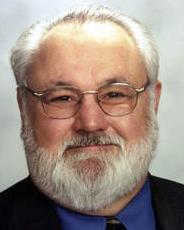
In the late 1990s another flare up of gang activity took hold of the village that was mostly quashed by late 1999. The Latin Kings and Gangster Disciples were revived while Two Sixs began to make appearances again and a large recruitment drive of the Four Corner Hustlers started in neighboring Bolingbrook and spread into Romeoville quickly thanks to Romeoville and Bolingbrook teens connecting in Romeoville High School. In the Lakewood Falls subdivision a faction of South Side Insane Popes developed that caused quite a stir in the Lakewood Falls subdivsion starting in 1997. This time Romeoville police were at the ready and were able to dismantle this uprising forcing the gangs into the underground once again. Mayor Fred Dewald (pictured) took office in 1997 after Gulden passed away and helped police apply the pressure on the gangs while rapidly developing commercial and retail businesses in the community.
Another spurt of gang activity happened around the year 2000 when the Two Sixs tried to establish more power than the Gangster Disciples which ended in the firebombing of a Gangster Disciple home by the Two Sixs, which caused the Two Six leader to face another prison term. The Latin Kings of course came to the surface again as well but once again this uprising of gangs was shoved underground by the police. The Two Sixs had successfully taken over the O’Hare Woods area from the Gangster Disciples around the year 2000 as they flipped many GDs into Two Six. The Two Six leader himself was a former GD that had flipped to Two Six and before any of that he was a Satan Disciple in the village.
In the early 2000s Romeoville began to offer some section 8 housing to impoverished families from the public housing projects in Chicago as they were being demolished and also for lower income Latino families from Chicago. Among the lower income families came gang members from Chicago that attempted to start up gang activity again in the village but all these attempts did not go far and Romeoville gang and crime issues have been kept rather under control.
Romeoville was not one of the first Chicago area suburbs to experience gang activity, nor does it still have a major issue with gangs and crime and is a fairly safe community. The reason for this article is the buck wild years of 1987 to 1995 when Chicago based street gangs were powerful and heavily active in the village.
